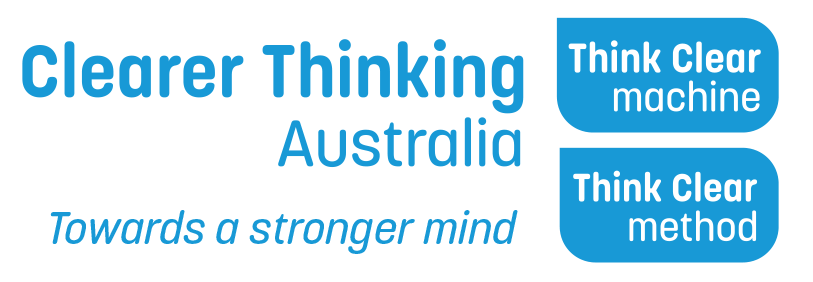method
The Think Clear method is a three-step approach to help people overcome trauma, anxiety, and PTSD.
The Method has three stages, however you can progress through all three or exit after any stage . For instance, we have many users who find after using the Think Clear Machine that they are relaxed enough to move forward
In the first stage, we use the Think Clear machine, a patented medical device, to regulate the part of the brain responsible for fear responses. The machine is small and can be used by a person on their own wherever they choose or with the assistance of a practitioner. The machine works by helping the brain switch off unnecessary scans for potential threats, allowing people to react to things happening in the present rather than events from their past.
The second stage involves examining how a person has formed their beliefs and associations about certain situations, and using techniques to break any associations that are no longer useful. By breaking these associations between current events and the initial experience, the feelings of anxiety can be greatly reduced.
In the final stage, a customised plan is developed for each person to help them move forward and thrive without being limited by their previous behaviours. This ensures that you then have a clear path for success. The Think Clear method has been successful in helping people get relief from a variety of issues, including anxiety, phobias, and PTSD.
In this stage we use a patented, TGA approved medical device to work with a specific part of the brain that drives all of our fear responses to events. These machines can be used by the person themselves, and with a practitioner’s assistance in laterstages of the method. It is a small, pre-programmed device that can be used as often as needed.
We work with this part of the brain as it stores all the memories associated with traumatic events. The brain stores these events as a type of “library” to keep us safe from the same type of things happening to us again. From these stored memories the brain will try and predict at the earliest possible time that a similar situation may be reoccurring, and it will want us to avoid that situation.
Sometimes we may not even remember where our minds learned the information. For instance, you know now that hot things may harm you, but generally people don’t remember where they first learned or experienced this; although it influences your behaviour years later. In this circumstance, this is useful to keep us safe from getting burned.
Because our brains will always try and keep us safe as its highest priority, it can sometimes use the information stored and predict incorrectly. For instance, someone who has had a car accident on a highway may then not want to drive on a worksite, despite work vehicles going at a much slower pace and with much less traffic around them. At this point the brain
is incorrectly assuming that something will go wrong and is distracting the person from the task at hand, and this warning is now not useful.
It is said in defensive driving, not to look at the corner as that’s exactly where you will point the car. The Think Clear machine is able to help this part of the brain switch off so that it is not scanning unnecessarily for where things can go wrong. This, most importantly, allows people to begin reacting to things actually happening at the time, not events that they are reminded of from previous experiences.
In this part we find out how the person has made their links on the circumstances in front of them and how they believe they are going to play out. We can then “map” how the person has come to these conclusions and, together with some further techniques, and the Think Clear Machine, break any links that are no longer useful.
These links can be complicated and illogical. For instance, I once worked with a lady who had claustrophobia. While playing hide and seek as a child of about 4 or 5, she got stuck in a washing machine. Ever since that point she had suffered from claustrophobia. She said that when she became stuck in the machine “it got really hot in there as well”.
After this experience, she obviously did not cope well in small spaces, but she also had another interesting reaction.
Every time she got physically too hot, those fears associated with the claustrophobia would resurface, even if she was out in an open park running.
Essentially, she had the same feelings of claustrophobia even when in wide open spaces, due to heat being one of her trigger points.
This was caused by the heat being part of the initial event, and her brain had stored that information to protect her if it looked like happening from all those years ago.
Once I broke the link her brain was making between current day events/environmental factors and the initial experience her feelings of claustrophobia disappeared, the above triggers and reminders were no longer linked to her childhood experience and now no effect her.
In this stage, once the person is no longer subject to their previous limits, we then work out a plan and framework for how they will best move forward.
Sometimes we are changing imbedded behaviours that may have been occurring for a very long time (the lady with Claustrophobia for instance
had suffered from it for nearly 40 years) therefore, a fully tailored plan is put in place for each individual for how they can best move forward.
Machine
